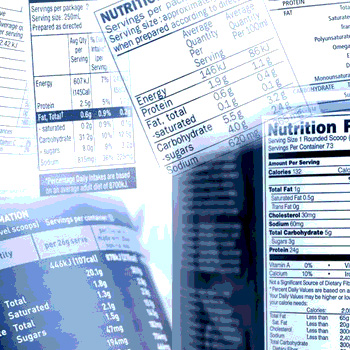The U.S. Food and Drug Administration (FDA)’s food labeling regulations present a minefield just waiting for a misstep. Whether it be “low-fat,” “high-fiber” or “gluten-free,” every claim or representation about food creates the potential for claims of misbranding in civil or criminal court. The year 2014 presented the latest wave of labeling requirements with revised demands relating to statements about nutritional content. As always, compliance with these new labeling regulations is necessary for existing peaceably with the FDA. But more importantly, representations on labels can result in serious injuries to consumers and significant civil liability for producers.
The 2014 nutrition labeling craze was almost entirely focused on the nation’s efforts to address epidemic levels of obesity and its co-morbidities. But much more than calorie counts were swept into the agency’s efforts. The first proposed regulations were published by FDA in March 2014. These regulations were the first major change to the Nutrition Labeling and Education Act of 1990. The proposed regulations (not yet published in final form) propose changes to the Nutrition Fact Label column on prepackaged food. These changes include revisions to serving size, to the nutrients, vitamins and minerals that must be listed and changes to recommended daily intake guidelines. Along with these substantive changes, FDA also proposed a reformatting of the Nutrition Fact Label itself to draw the consumer’s attention to the information which it deems most important.
The Nutrition Labeling and Education Act of 1990 specifically exempted foods sold in restaurant-type settings. Twenty years later, the Patient Protection and Affordable Care Act of 2010 set out to close that loophole by directing FDA to create regulations that would provide consumers access to certain nutritional information relating to food purchased in restaurants. After much debate, the final Restaurant Menu Labeling Regulations were published by FDA on December 1, 2014. Because the primary motivation for this regulation as it was defined in the Affordable Care Act was to address obesity, the most prominent nutritional information required to be listed on menus is calorie counts. But additional nutritional information must also be made available to consumers in writing upon request. This additional nutritional information requirement very closely resembles the information and format required for Nutrition Fact Labels contained on prepackaged foods.
In reading FDA’s analysis of both regulations, it is interesting to note that their proposals include not only scientific nutritional analysis but also studies of human behavior. They purport to base the proposals on considerations of what information will cause consumers to make healthier eating choices and how best to present that information to maximize both attention and understanding. While the data seems to show that providing more and better nutritional information results in some improved choices, the overall impact appears to be underwhelming.
Nonetheless, changes to nutritional labeling are here to stay and the impact on producers—whether that be manufacturer or restaurateur—is significant. Putting aside the big picture for a moment, the most dangerous risk to a producer may come from the individual who actually reads the nutrition label. Although results vary, studies show that less than 50 percent of consumers regularly read nutrition labels on prepackaged food. And the number of consumers who will ask to see nutrition information in restaurants will likely be even lower. But the people who seek out and read that information do so for a reason, usually a specific health-related reason. Whether it is to monitor cholesterol, salt or sugar, the average person who reads nutritional content on a regular basis likely has a pre-existing health condition that requires the monitoring of those factors.
Why is this present such a significant risk? There are the random lawsuits by consumers claiming they became obese because nutrition labels didn’t accurately reflect how many calories were in the fifty chocolate cream pies they ate last week. But the diabetic consumer who relies upon inaccurate sugar content may end up in diabetic shock. The cardiac consumer who relies upon inaccurate sodium content may end up in cardiac arrest. Producers are required to provide nutrition information and they are on constructive notice that among the consumers who may rely on that information are people with pre-existing health conditions. For these consumers, inaccuracies on the label can prove fatal.
Given the production process, inaccuracies or variances are nearly impossible to avoid. The regulations on Nutrition Fact Labels already allow for a 20 percent variance from the represented nutrient levels. A U.S. News & World Report article in 2012 suggests that at least 10 percent of tested foods varied even beyond that 20 percent allowance. While these reports shock the average consumer, from a food science perspective, it is understandable. Calculating precise nutrition information for a food product that can and does vary in some respect between plants, between lots, between each batch of ingredients and over time becomes extremely difficult. Calculating that information in the world of restaurant food is close to impossible. Despite standardized recipes, batches of food are made by cooks who rarely take the time to measure, who routinely substitute ingredients and who serve plates of food with an eye toward “presentation” and not specific serving size. The likelihood of accurate nutritional information in that setting is nearly impossible.
So while it’s the calorie counts that get all of the press, it’s the other nutritional information that poses the biggest risk to consumers’ health and to producers’ potential liability. Variances may be inevitable. But creating self-auditing processes will go a long way to catching a problem before it leaves the door. And if it a lawsuit does occur, the effort to self-audit and monitor the accuracy of the nutritional representations will help to diffuse liability and/or minimize a damage award.
Kathy Hardee, Esq., is co-chair of the Food & Agriculture Industry Group at Polsinelli, PC, which is composed of a team of attorneys from every legal practice area and who each have a focused background in the food industry.
>




